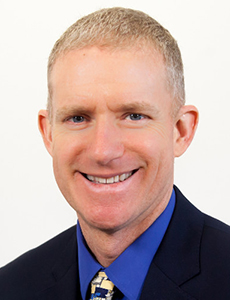Climate Change Threatens Workers’ Wellbeing in Multiple Ways. Workers’ Comp Could Be the First Line of Defense

The effects of climate change can be felt in all corners of the world. These changes have implications for all lines of insurance coverage, whether directly as we have seen from the devastating impacts of worsening storms and wildfires, or indirectly, like the impacts to employees who face adverse working conditions made even more challenging by changing weather.
A session at National Comp 2022 took on this topic with a panel covering climate change and workers’ compensation risk. “Rising Temps, Rising Risks: Climate Change & Comp” featured three industry leaders discussing the challenges and emerging risks for workers’ compensation arising from climate change risks.
Jill Leonard, VP Claims, Louisiana Workers’ Compensation Corporation; Jeff Rush, Workers’ Comp Program Manager, California Joint Powers Insurance Authority; and Joe Paduda, Principal at Health Strategy Associates LLC, took the stage in the afternoon of the second day of the conference to provide insights into this current topic.
The speakers tackled the complex topic from various angles, first describing some direct losses from extreme weather events like Hurricanes Harvey and Katrina, the August 2016 Baton Rouge flood, and the November 2018 Camp Fire in California.
The panel then shifted to discussing some of the challenges workers face before, during, and after these severe weather disasters. The speakers focused on ways to protect workers and employers from the impacts of severe weather.
Indirect Losses Add Up
The direct losses following a natural disaster like a hurricane or tornado are devastatingly obvious to the naked eye. Images of flattened trees, leveled homes, and flooded vehicles are splashed across the internet and on the evening news. But while the indirect losses following these catastrophes are not as visible, they can be even more costly.
“The effects of climate change are both blindingly obvious and almost invisible. Both can be just as impactful,” Paduda explained.
He cited examples like Hurricane Harvey, which flooded chemical factories in Houston and released toxic chemicals into the flood waters. Or the recent effects of Hurricane Ian in Florida when sewage plants flooded and released wastewater into Tampa Bay. The impacts of these events may be felt for decades in these communities.
Moving on to indirect effects on employees, the panel described the challenges in reaching employees following natural disasters. With the internet and electricity down, reaching employees who may be injured or displaced after a catastrophe is challenging.
Reaching workers’ compensation patients to continue care following a disaster is equally difficult. An injured worker’s course of treatment can be delayed dramatically when utilities, roads, and services are damaged. Paduda noted the impracticalities of getting to injured workers when infrastructure is destroyed after a hurricane or wildfire.
Take Care of the People
Leonard noted the most important thing is to “just take care of the people.” She described lessons learned from Hurricane Katrina when they couldn’t find many injured workers in the immediate aftermath. Knowing the mail was not being delivered in certain zip codes, her office instituted a manual process to pull the checks from the mail to try to find their injured workers. Learning from this challenge, a new digital payment process has been implemented so delays in physical mail won’t affect workers.
“The effects of climate change are both blindingly obvious and almost invisible. Both can be just as impactful.” — Joe Paduda, principal, Health Strategy Associates
Since cell phone lines are often unavailable in the immediate aftermath, Leonard looked to new technology for help. She found an Insurtech vendor to provide texting capabilities directly from employees’ laptops to customers’ phones.
When calls don’t connect after a crisis, text messages often still do. This meant Leonard’s innovative solution could reopen lines of communication during emergencies.
Reflecting on the lessons learned, Leonard said, “We can do better, and we have. You don’t prepare when you see this type of event coming — you prepare months and years in advance.”
Rush discussed his perspective on managing the risks associated with California wildfires. The multitude of indirect risks possible in a wildfire includes electrical issues, carbon monoxide poisoning, injuries from lifting heavy things to move them out of way in a fire, heat-related illnesses, risks from unstable structures, worker fatigue, respiratory inhalation issues, vehicle safety during the fire or evacuation, slips, trips, and falls. The fire itself also causes injuries directly to workers.
He cited an example of a firefighter injured during a wildfire response. The worker was inside a command center trailer and slipped as he tried to sit down. The resulting fall caused a herniated disc. The injury and accident types were unexpected based on the direct risks of the weather event.
Paduda listed more indirect risks following extreme weather events. People die when the power is out, and ventilators and other medical devices stop functioning. Others suffer heart attacks from overexertion or stress following the storm.
Still others experience heat-related illnesses because the air conditioning is out, especially in tropical climates. Patients run out of life-saving medicine and paramedics can’t get to critically injured or ill people when roads are flooded or debris blocks vehicles. “Indirect deaths associated with significant weather events are five to ten times higher than direct deaths,” Paduda noted.
Continuing with additional workers’ compensation exposures resulting from changing climate conditions, Rush said, “We could have workers’ comp exposure if an employee is working from home or remotely and is in a fire or has exposure to bad air quality from a wildfire. Where employees are located is an important consideration for employers to know their exposures.”
Takeaways to Manage the Workers’ Compensation Risks of Climate Change
Paduda ended the session with a list of tangible takeaways for the audience. He described managing the effects of severe weather-related disasters with this four-step approach:
- Prepare before disaster strikes. Understand what the potential risks are and how they could manifest in your geographic area.
- Plan for the ongoing event. During a catastrophe, how do you make sure employees are safe, that they can access data, and that they have a safe place to work from whether they can shelter in place or can evacuate to a safe location?
- During the immediate recovery and aftermath, protect people from flooding, collapsing buildings, fires, power outages, chemical spills, and other direct and indirect risks.
- In the rebuilding phase after a natural disaster, several risks emerge. Unscrupulous contractors, roofers without experience, and new employees without experience all change the risk profile.
The speakers noted the difference between individual weather events and endemic changes, like rising global temperatures. Depending on the type of climate-related challenge, employers and insurers need to prepare differently. And while employers cannot prepare for or predict every possibility, having a robust plan in place before it is needed leads to a faster — and less stressful — recovery.
Paduda concluded, “You can’t prepare for everything, but you have to be prepared to handle the unexpected. As the saying goes, fortune favors the prepared. If you aren’t prepared, things won’t go nearly as well as if you are.” &












